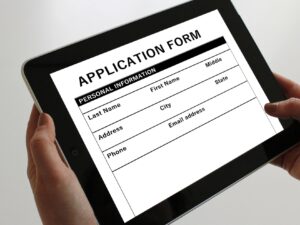If you are a skilled worker looking to immigrate to the United States, there are several options available to you. The U.S. government offers employment-based immigrant visas to foreign nationals who possess the skills, experience, and education necessary to contribute to the American workforce. These visas are available to individuals who have been offered employment by a U.S. employer, and who meet certain eligibility requirements.
One type of employment-based immigrant visa is the Third Preference EB-3 visa. This visa is available to skilled workers, professionals, and other workers who have at least two years of training or experience in their field. To be eligible for this visa, you must have a job offer from a U.S. employer, and your employer must obtain a labor certification approval from the Department of Labor. Once your employer has received this approval, they can file an Immigrant Petition for Alien Worker on your behalf.
Other types of employment-based immigrant visas include the First Preference EB-1 visa for priority workers, the Second Preference EB-2 visa for professionals with advanced degrees or exceptional ability, and the Fourth Preference EB-4 visa for special immigrants. Each visa category has its own eligibility requirements, so it is important to research your options and determine which visa is right for you. With the right qualifications and a job offer from a U.S. employer, you may be able to obtain an employment-based immigrant visa and begin your new life in the United States.
Overview of Employment-Based Immigrant Visas
If you are a skilled worker seeking to immigrate to the United States, you may be eligible for an employment-based immigrant visa. These visas are designed to attract foreign nationals who have the skills, education, and experience needed to fill jobs that are in high demand in the US.
Categories of Employment-Based Visas
There are five categories of employment-based immigrant visas, each with its own set of eligibility criteria. These categories are:
- EB-1: Priority Workers
- EB-2: Professionals with Advanced Degrees or Exceptional Ability
- EB-3: Skilled Workers, Professionals, and Other Workers
- EB-4: Special Immigrants
- EB-5: Immigrant Investors
Each category has its own set of requirements, and the number of visas available in each category is limited.
Eligibility Criteria for Skilled Workers
To be eligible for an employment-based immigrant visa as a skilled worker, you must meet certain criteria. These criteria include:
- Having a job offer from a US employer
- Possessing the necessary skills, education, and experience to perform the job
- Demonstrating that there are no US workers who are able, willing, qualified, and available to fill the position
- Meeting any additional requirements specific to your visa category
If you meet these criteria, you may be able to obtain an employment-based immigrant visa and begin your journey to becoming a permanent resident of the United States.
Overall, the US offers a variety of employment-based immigrant visas for skilled workers. By understanding the different categories of visas and the eligibility criteria for skilled workers, you can determine which visa is right for you and take the necessary steps to begin your immigration journey.
Application Process for Skilled Workers
Required Documentation
To apply for an employment-based immigrant visa as a skilled worker, you will need to provide the following documents:
- A labor certification from the U.S. Department of Labor (DOL)
- Form I-140, Petition for Alien Worker, filed by your employer
- Evidence of your qualifications, such as educational degrees or certifications
- Passport valid for travel to the United States
- Two passport-style photos
- Application fees
Visa Application Steps
Once you have gathered the required documentation, you can begin the visa application process. The steps include:
- Your employer files Form I-140, Petition for Alien Worker, with USCIS.
- Once the petition is approved, you will receive a priority date.
- When your priority date becomes current, you can apply for an immigrant visa at a U.S. embassy or consulate in your home country.
- Attend a visa interview and provide any additional documents requested by the consular officer.
Adjustment of Status
If you are already in the United States on a nonimmigrant visa and your priority date is current, you may be eligible to apply for adjustment of status to become a permanent resident without leaving the country. To apply for adjustment of status, you will need to file Form I-485, Application to Register Permanent Residence or Adjust Status, and provide the required documentation, including evidence of your qualifications and a medical examination.
Note that the application process for employment-based immigrant visas can be complex and lengthy. It is recommended that you seek the assistance of an experienced immigration attorney to guide you through the process and ensure that your application is complete and accurate.
Impact on the US Economy
Benefits to the Workforce
The US employment-based immigrant visa program provides a significant benefit to the US workforce. The program allows US employers to hire skilled foreign workers to fill positions that are difficult to fill with domestic workers. These skilled workers bring with them a wealth of knowledge and expertise that can help US companies remain competitive in the global marketplace.
In addition, the program provides an opportunity for foreign workers to come to the US and contribute to the US economy. These workers are often highly educated and have specialized skills that are in demand in the US. By allowing these workers to come to the US, the program helps to fill critical skill gaps and ensures that US companies have access to the talent they need to compete.
Economic Growth and Innovation
The US employment-based immigrant visa program also has a significant impact on the US economy. By allowing US companies to hire skilled foreign workers, the program helps to drive economic growth and innovation. These workers often bring new ideas and perspectives to US companies, which can help to spur innovation and create new products and services.
Furthermore, the program helps to create jobs for US workers. By allowing US companies to fill critical skill gaps with foreign workers, the program helps to ensure that US companies remain competitive and can continue to grow. This growth, in turn, creates new job opportunities for US workers.
Overall, the US employment-based immigrant visa program provides a significant benefit to both the US workforce and the US economy. By allowing US companies to hire skilled foreign workers, the program helps to fill critical skill gaps, drive innovation, and create new job opportunities.










